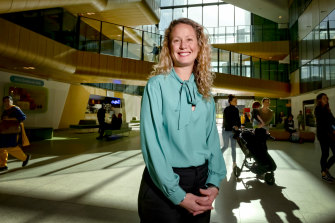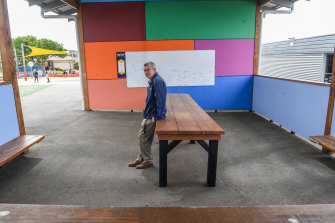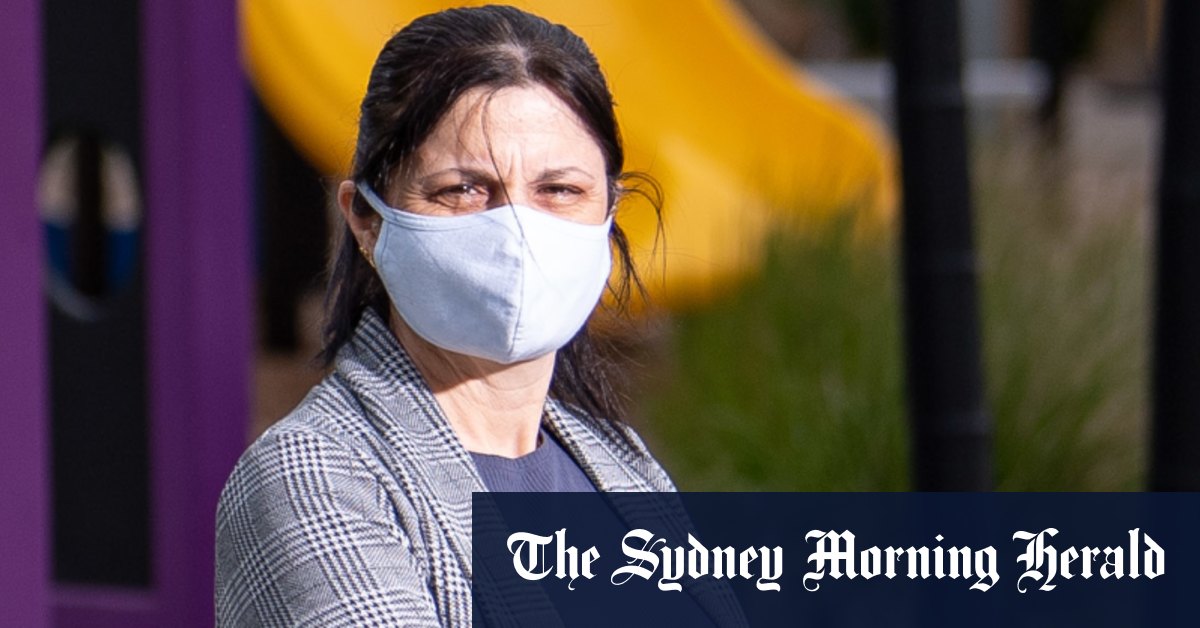But unlike the “doughnut day†when they went back in term four 2020 – when there were just 39 active COVID-19 cases in the state and zero new cases – students will return to record numbers of infections, including almost 3000 active cases among under-10s.
Schools will operate by a different set of rules and guidelines too.
Doors and windows will be opened for airflow, heaters and air conditioners switched off, and recess and lunchtimes staggered.
Face masks will be strongly recommended for prep to year 2 students and mandatory for students in years 3 to 6, who are not due back in classrooms for another week under the government’s staged return.
By Friday afternoon, schools were yet to receive advice from the Department of Education and Training on how to enforce the mask mandate.
Staff will also face new requirements, such as eating lunch outdoors, and must have had at least one dose of a vaccine, or prove they have booking that week.
The staged return means that prep students will have the run of their schools for the first three days of the week, before returning to remote learning to make way for year one and two students on Thursday.
Among them will be Estelle Shipp, a year one student at Brunswick South Primary in Melbourne’s inner north.
Year one student Estelle Shipp, seated with her parents Joseph and Michelle Shipp, would rather be in school than learning at home. Credit:Justin McManus
Estelle says she’d rather be learning at school than at home and is happy to wear a mask to make that happen.
“The older people in the other grade have to but I don’t have to; I want to so I’ll be more safe,†she says.
Her parents, Michelle and Joseph Shipp, say they are conscious that primary school children are not yet able to be vaccinated and more vulnerable to being infected, but also worry about how much classroom learning Estelle has already lost.
“At her age we’re lucky she hasn’t known all that different. She’d only just begun school and then COVID hit,†Ms Shipp says.
Mr Shipp says they support the decision to send children back to school, given they have been deprived of social interaction with other children for so long.
“We’re OK with it but obviously cautious and we really would prefer to have all vaccines available for the over-fives. As soon as that’s available we’ll get Estelle vaccinated straight away,†he says.
Parents should expect a rise in cases among children and more outbreaks at schools from Monday, Royal Children’s Hospital paediatrician and immunisation expert Margie Danchin says.
But Associate Professor Danchin urged parents not to hold their unvaccinated children back from attending school for fear of them getting infected. Hospitalisations among the young have been very rare, she said.

Any rise in cases among children will pose a risk to unvaccinated adults, Associate Professor Margie Danchin says.Credit:Luis Enrique Ascui
“Even over the last two months with a lot more cases in the community with the Delta variant, illness in children is still overwhelmingly mild.
“At least half don’t have symptoms and the rest have pretty mild respiratory symptoms. We have only seen four to five admissions per week over the last two months and those are brief admissions; one to two nights for a bit of fluid and oxygen.â€
But the looming rise in cases among children does pose a risk to unvaccinated adults, who are more likely to be infected and become ill, Dr Danchin warns.
“If a parent has a kid going back to school on Monday and they’re [the parent] not vaccinated, that’s a problem.â€
High case numbers led several non-government schools across Melbourne to spurn the staged return to school last week, instead instructing their VCE students to stay home and stick with remote learning. Some gave students a choice to come to class or learn from home with full support from teachers.
It’s not a choice Victoria’s that 1553 state schools have the luxury of offering.
“The state system is such a big system; you’ve got hundreds of thousands of students,†Australian Principals Federation acting president Tina King says.
“As we transition back to on-site [learning], we can’t do a compromise model that has face-to-face and remote learning as well. It’s unmanageable.â€
By Friday afternoon there were 34 schools listed as closed by the Department of Education and Training.
Loading
New COVID-safe protocols for term four mean schools no longer have to close for 14 days, but can reopen within 24 hours after a medical clean. Some have been forced to continue remote learning this week anyway because too many staff are in isolation for the school to function on-site.
Northcote High School, for example, has never been officially closed after a student tested positive last week, though year 12 students were told to stay home on Monday and are yet to receive the all-clear to return.
Parent Karen Stephens says there is frustration and sadness in the school community that they were missing out on their final days together.
“Our current year 12s have been going through this for two years,†she says.
In Melbourne’s south-east, the job of returning almost 2600 students safely back to school this term has also become something of an administrative nightmare for Steve Mahoney.

Steve Mahoney, assistant principal at Narre Warren P-12 College, where almost 5000 staff, students and their families have been vaccinated on-site. Credit:Justin McManus
Mr Mahoney, who is assistant principal of Narre Warren South P-12 College, says the government school had done a power of work to prepare for students’ return.
It has ordered “boxes and boxes†of masks, audited ventilation and vaccinated almost 5000 staff, students and their families on-site.
As COVID-19 cases grow in Melbourne’s southeast, Mr Mahoney is conscious of the risks but thrilled to go back.
“Like every school in Victoria, it is a concern,†Mr Mahoney says. “We had four kids who couldn’t do the GAT because they were in isolation.â€
But he says it is time to get the kids back to school, to reduce the amount of time they are spending online and for their socialisation.
Stay across the most crucial developments related to the pandemic with the Coronavirus Update. Sign up for the weekly newsletter.

